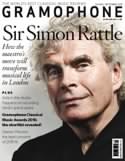Texte paru dans: / Appeared in: |
|
|
Outil de traduction (Très approximatif) |
|
|
Reviewer: David Vickers
John Christopher Smith (1712-95) was the son of Handel’s long-serving assistant Johann Christoph Schmidt. By 1725 he was studying composition and harpsichord with Handel; from 1751 he served as his mentor’s amanuensis, and he eventually succeeded his master as director of oratorio seasons at Covent Garden. He is the only one of Handel’s pupils who followed in his teacher’s footsteps as a professional keyboard player and composer-performer of theatre works.
His music occupies a strange sort of halfway territory between the late Baroque style and the progressive early Classical mould, and Julian Perkins captures the dichotomy of mid-18thcentury England’s Scarlattian obsession and the emerging rococo style in his judicious playing of Smith’s Six Suites of Lessons for the Harpsichord, Op 3 (printed by John Walsh in 1755) – although he prefaces it with Handel’s own short harpsichord arrangement of the overture to Riccardo Primo.
A single-manual English harpsichord, probably made by Mabyn and William Bailey (London, c1770) is used in flat-key suites, but for the suites in sharp keys Perkins plays a bigger Franco-Flemish double-manual instrument (each instrument is tuned to a different temperament as well as offering distinctive sonic palettes). The larger instrument is used with delicate refinement when necessary (eg in the Larghetto from No 1 in A major), whereas the Gavotte that ends No 4 in D major has crisp theatricality. The ‘fruity’ sound of the smaller English instrument is to the fore in the concluding Allegro in No 2 in C minor, in which more than a splash of Handelian repeated-note rhetoric is developed with tense chromaticism; its lute-stop is reminiscent of a softly lyrical mandolin in the central Allemande in No 3 in F major and the Gavotte that ends No 4 in B flat major. These playful lessons amply repay Perkins’s curiosity. |
|
|
|
|
|
Cliquez l'un ou l'autre
bouton pour découvrir bien d'autres critiques de CD |
|

/0095115080726.jpg)


